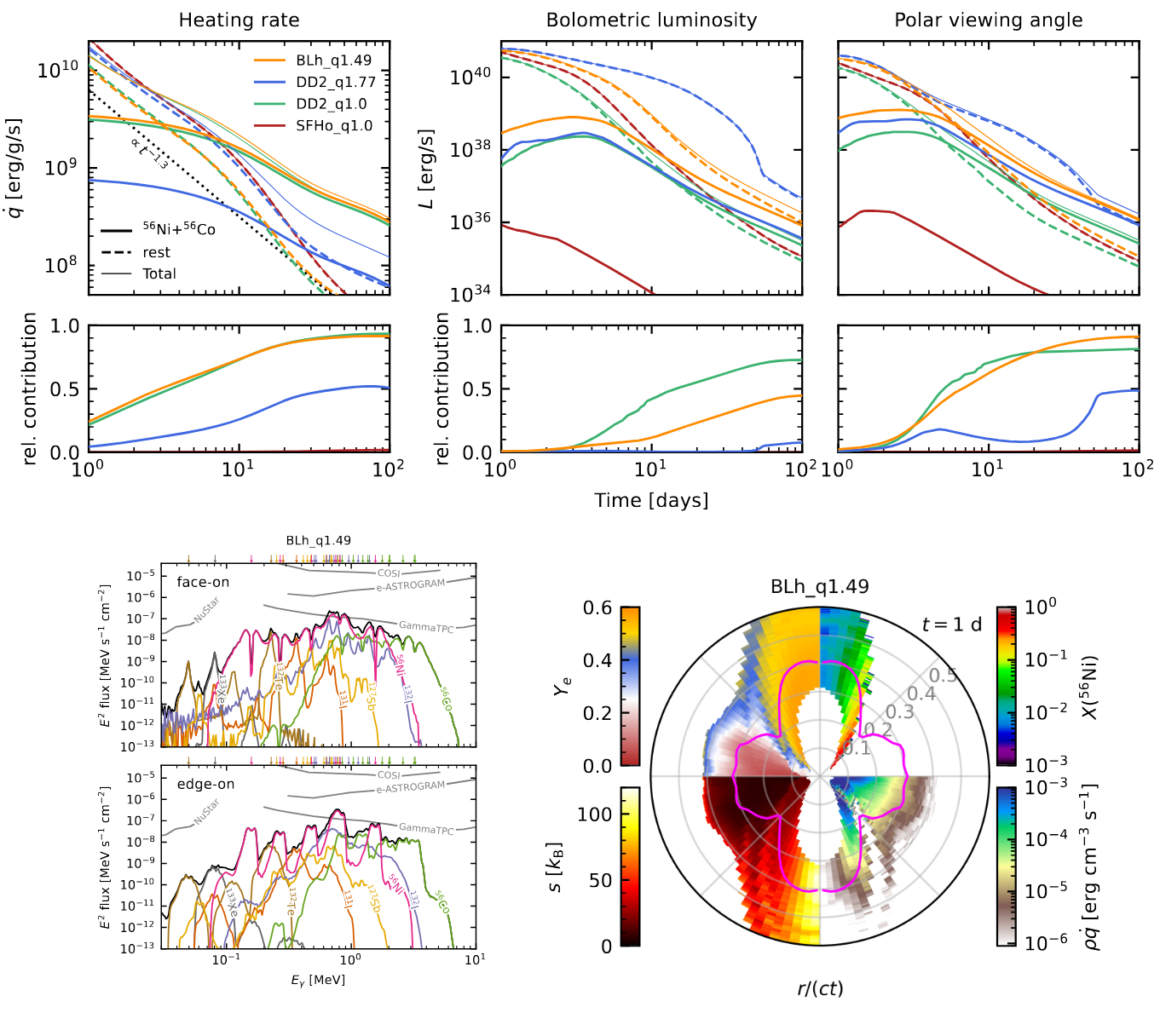56Ni production in long-lived binary neutron star merger remnants
In 2503.17445 we investigate the nucleosynthesis and kilonova emission based on numerical-relativity binary neutron star merger simulations that incorporate a two-moment neutrino-transport scheme. Unlike in previous works with simpler neutrino treatments, a massive, fast (up to v=0.3c), proton-rich neutrino-driven wind develops in the post-merger phase of the simulations as long as the merger remnant does not collapse to a black hole. We evolve the ejecta for 100 days after the merger using 2D ray-by-ray radiation-hydrodynamics simulations coupled in-situ to a complete nuclear network. The most abundant nucleosynthesis products are He, 56Ni, and 56Co. We find a total yield of ∼1e−3Mo of 56Ni for all mergers that produce massive neutron star remnants, independently of the mass ratio and equation of state. After a few days, the decay of 56Ni and later 56Co becomes the primary source of heating in the matter expanding above the remnant. As a result, the kilonova light curve flattens on timescales of days for polar observation angles. γ rays emitted by the decay of 56Ni and 56Co peak around 700 – 800 keV and will be detectable by future instruments like GammaTPC for an event up to a distance of 40 Mpc. The observation of these effects could serve as smoking gun for the presence of a long-lived neutron star remnant in future kilonova observations.
Read more
